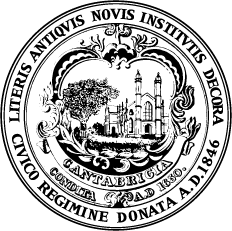The City of Cambridge announced today plans to restore the exterior façade of the historic City Hall. Cambridge has a rich history, and the landmark City Hall building is a significant part of that story.
In the late 1880s Cambridge Mayor William E. Russell solicited wealthy Cantabrigians for donations to build a new public library. His friend and classmate Frederick Hastings Rindge responded in 1887 with an offer to fully fund a new building. Rindge offered to give the city a manual training school and a new city hall. Rindge acquired the land, selected the architect (the firm of Longfellow, Alden & Harlow), hired and supervised the contractors, and turned the completed building over to the city.
The new City Hall, located at 795 Massachusetts Avenue, was completed in 1890. The building’s vast front lawn is one of the most popular green spaces in Cambridge. Above the entrance is a balcony with a panel containing an inscription chosen by Rindge, and a tower rising almost 160 feet. It is built primarily of Longmeadow brownstone, with accents of granite and red brick.
Today, the City of Cambridge is excited to embark on a 15-month façade restoration project of City Hall to preserve its historic character. Work includes gilding at the clock tower, originally manufactured by the E. Howard Watch & Clock Company of Waltham. The clock is original to the building and was last restored 20 years ago. To this day, it is still wound by hand once a week.
Other work includes masonry repairs, masonry cleaning, window painting, upgraded modernized tower lighting, lightning protection, and flagpole replacement. The project is currently out to bid with construction expected to begin fall 2023.
“City Hall is a historic building with incredible character and charm,” said Cambridge City Manager Yi-An Huang. “The upcoming restoration project will not only preserve its rich character but breathe new life into what truly is a landmark in Cambridge and the greater region. We are excited to get this project started.”
Cambridge City Hall continues to serve as the seat of government for the city. It houses various administrative offices, including the City Manager’s Office, Mayor’s Office, City Council chambers, and other municipal departments. The building was added to the National Register of Historic Places in 1997, recognizing its architectural significance and contribution to the city's history.
To learn more about the planned restoration, visit the
project page.



